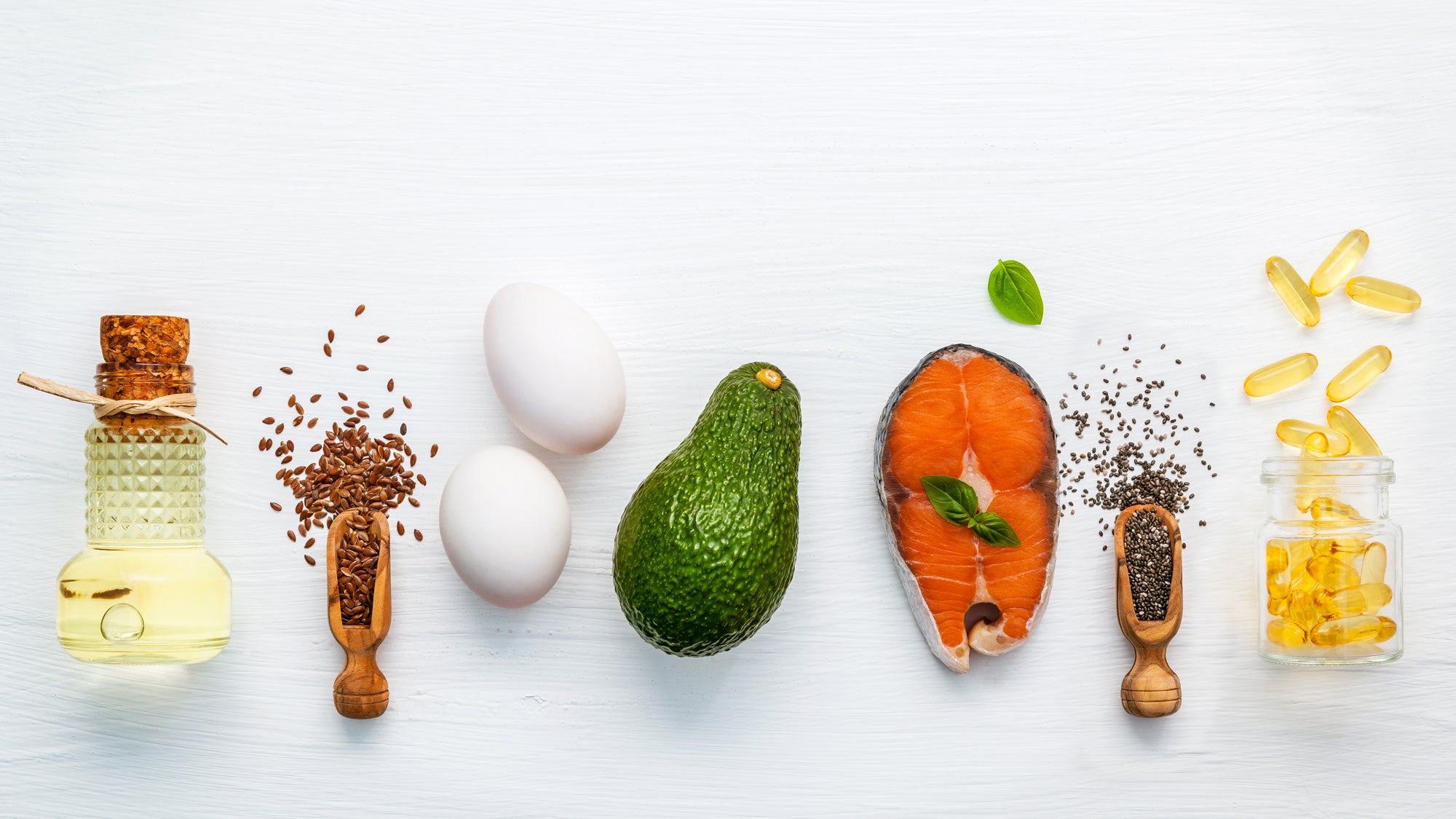Bad Fats and Good Fats: What You Need to Know

The topic of fats and their role in a healthy diet can be very confusing, especially when it comes to how they can impact the overall performance of an athlete. The authors of “Sports Nutrition Handbook: Eat Smart. Be Healthy. Get on Top of Your Game.” break down the need for healthy fats, explain the difference between bad fats and good fats, and share a case study of an athlete who was not consuming enough healthy fats.
Different Fats Have Different Functions
Two basic types of lipids are found in cells: structural fats that form cell membranes and other structures, and neutral fats, which accumulate in fat cells and are converted to energy throughout the day. Structural fats are not used for energy production.
Fat in fat cells (adipocytes) undergoes continuous deconstruction and rebuilding (lipolysis and resynthesis, respectively). It is here that glucose is metabolized to fatty acids and, after the incorporation of glycerol, neutral fats are formed. These are broken down by lipase, and then the glycerol and free fatty acids formed in this reaction are released into the bloodstream.
Fat Classifications
Fats can also be categorized according to the number of double bonds in the fat molecule. All fatty acids found in food are divided into three groups:
- Saturated (no double bonds)
- Examples include palmitic acid and stearic acid.
- Monounsaturated (one double bond between a pair of carbon atoms)
- Examples include oleic acid and palmitoleic acid.
- Polyunsaturated (double bonds between more than one pair of carbon atoms)
- Examples include omega-6 and omega-3 fatty acids.
Essential Fatty Acids
Essential fatty acids (EFAs) belong to the polyunsaturated group. The term “essential” is used to emphasize the need for these acids in our diet: Our body doesn’t have enzymes that can create them, so we need to acquire them from what we eat.
Trans Fats
Trans fats are not found in plants or animals but rather created by a chemical process that converts naturally occurring liquid fats to a more solid form. They are ubiquitous in prepared foods. In products that include some sort of shortening (as is needed in baked goods), they appear nearly 90 percent of the time. These fats are also pervasive in ready-made meals and fast food. Because trans fats are slow to oxidize, they can be used for foods that need a long shelf life or when a fat must stand up to repeated exposure to the high temperatures of frying. Whether sourced from vegetable or animal fats, trans fats are one of the causes of health problems.
Saturated Fats
Naturally occurring animal fats, found primarily in animal meats, raise the risk of high cholesterol, a condition that can cause many serious cardiovascular problems. But while animal fats increase total cholesterol in the blood, they balance the “bad” (LDL) and “good” (HDL) cholesterol levels, so the ratio of the two types doesn’t fluctuate; only the overall quantity of the cholesterols changes.
The amount of saturated fatty acids (for example, bacon fat) should be limited in the diet because they increase the concentration of LDL cholesterol and triglycerides in the blood, which is known as one of the causes of cardiovascular disease. As clinical studies have shown, one way to reduce saturated fat (from dairy products and meat) in the diet is to replace these fats with polyunsaturated fats from vegetable oils, which will reduce the risk of cardiovascular disease.
Low Levels of Essential Fatty Acids Can Cause Many Problems
A lack of EFAs can disrupt many physiological functions. In the case of energy and nutrition, it can lead to the following problems:
- Limitations of ATP construction in mitochondria
- Cholesterol transport disorders
- Disorders in lipoproteins of cell membranes
- Increased cholesterol in the body
- Increased susceptibility to bacterial infections
- Disorders of many tissues and organs
- Deterioration of visual acuity
- Low muscle tone
- Excessive appetite
- Poor nitrogen retention in the body
- Reduced resistance to X-rays
Other negative effects include lack of weight gain, pathological kidney growth, enlargement of the heart muscle, and various skin changes.
Case Study: Fats Are Helpful and Necessary, Even for a Healthy Athlete
Meredith was a successful cyclist on a junior national team. She had improved over several years, but her performances eventually became stagnant. Tests on her body composition revealed that she wasn’t properly balancing her nutrition with the demands of her sport. Without a nutritionist’s consultations, Meredith had transitioned to an unbalanced diet with insufficient amounts of calories and fats. Consequently, she had reduced her level of body fat to 11 percent. Her poor diet also caused a decline in muscle mass, which translated into poor results in races and in training. Meredith stopped menstruating, but she considered it a normal side effect of competing at an elite level.
The Fix
It was important for Meredith to learn about the role of fatty tissue in the body. Education was the first and most important step because without this awareness, she would not be inclined to increase the number of calories in her diet from both carbohydrates and healthy fats. Once she had this information, her fat intake was increased to 1 gram per kilogram of body weight per day, and her carbohydrate consumption was raised, too.
Results
Meredith found that she began to feel better, and her performances improved, too. The changes to her diet helped improve her skin’s appearance and restored her regular menstrual cycle. She was encouraged to maintain her healthy eating habits and to listen to her body, which translated into greater success on the bike.
[velopress cta=”Shop now” align=”center” title=”Buy the Book”]